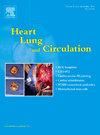评价缺血性卒中颈动脉斑块特征的临床意义:一项系统回顾和荟萃分析。
IF 2.2
4区 医学
Q2 CARDIAC & CARDIOVASCULAR SYSTEMS
引用次数: 0
摘要
背景:越来越多的人对通过心脏计算机断层扫描评估血管周围脂肪衰减作为炎症和血管风险的替代方法感兴趣。尽管对冠状动脉周围脂肪组织的研究很充分,但关于颈动脉周围脂肪及其与缺血性脑卒中(is)关系的文献却很少。本系统综述旨在描述颈动脉斑块,特别是颈动脉周围脂肪衰减及其与IS的关系。方法:系统检索PubMed、Ovid Medline、EMBASE、Web of Science、Cochrane Central Register of Controlled Trials、Scopus、Proquest和Science Direct数据库(2000-2025;仅提供英文;PROSPERO CRD4202462124),以确定通过心脏计算机断层扫描评估成年IS或短暂性缺血发作(TIA)患者颈动脉周围脂肪衰减的所有相关研究。单独提取颈动脉周围脂肪密度数据,然后使用随机效应模型进行meta分析,以标准化平均差(SMD)和优势比作为总结效应。结果:共纳入8项研究,共纳入1041例有症状患者(确诊为IS/TIA)和1431例无症状患者(排除IS/TIA)。虽然两组间颈动脉斑块厚度没有差异(SMD, 0.42; 95%可信区间[CI] -0.27 ~ 1.11; p=0.235),但有症状的患者更容易出现斑块溃疡(优势比2.27;95% CI 1.30 ~ 3.97; p=0.004),平均颈动脉周围脂肪衰减更高(SMD, 1.10; 95% CI 0.67 ~ 1.53; p结论:IS/TIA患者的平均颈动脉周围脂肪衰减高于无症状人群。颈动脉周围脂肪减少是血管炎症的替代标志物,常规评估可能能够识别无症状颈动脉疾病的高风险人群。本文章由计算机程序翻译,如有差异,请以英文原文为准。
Evaluation of the Clinical Significance of Carotid Plaque Characteristics in Ischaemic Stroke: A Systematic Review and Meta-Analysis
Background
There is a growing interest in the assessment of perivascular fat attenuation on cardiac computed tomography as a surrogate of inflammation and vascular risk. Although pericoronary adipose tissue is well-studied, there is a paucity of literature on pericarotid fat and its relationship with ischaemic stroke (IS). This systematic review aimed to characterise carotid plaque, particularly, pericarotid fat attenuation, and its relationship with IS.
Method
A systematic literature search of the PubMed, Ovid Medline, EMBASE, Web of Science, Cochrane Central Register of Controlled Trials, Scopus, Proquest, and Science Direct databases was performed to identify all relevant studies assessing pericarotid fat attenuation by cardiac computed tomography in adult patients with IS or transient ischaemic attack (TIA) (2000–2025; English only; PROSPERO CRD4202462124). Data for pericarotid fat density was individually extracted and then meta-analysed using random-effects models, with standardised mean difference (SMD) and odds ratios as summary effects.
Results
A total of eight studies including a total of 1,041 symptomatic patients (confirmed IS/TIA) and 1,431 asymptomatic patients (exclusion of IS/TIA) were included. Although there was no difference in carotid plaque thickness between the groups (SMD, 0.42; 95% confidence interval [CI] −0.27 to 1.11; p=0.235), symptomatic patients were more likely to have ulcerated plaque (odds ratio 2.27; 95% CI 1.30–3.97; p=0.004) and higher mean pericarotid fat attenuation (SMD, 1.10; 95% CI 0.67–1.53; p<0.001) than asymptomatic patients. Meta-regression analyses identified hypercholesterolaemia as the only significant moderator (coefficient, −0.02; 95% CI −0.04 to −0.01; p=0.04).
Conclusions
Populations with IS/TIA have higher mean pericarotid fat attenuation than asymptomatic cohorts. Pericarotid fat attenuation represents a surrogate marker of vessel inflammation, and routine assessment may be able to identify higher risk populations with asymptomatic carotid artery disease.
求助全文
通过发布文献求助,成功后即可免费获取论文全文。
去求助
来源期刊

Heart, Lung and Circulation
CARDIAC & CARDIOVASCULAR SYSTEMS-
CiteScore
4.50
自引率
3.80%
发文量
912
审稿时长
11.9 weeks
期刊介绍:
Heart, Lung and Circulation publishes articles integrating clinical and research activities in the fields of basic cardiovascular science, clinical cardiology and cardiac surgery, with a focus on emerging issues in cardiovascular disease. The journal promotes multidisciplinary dialogue between cardiologists, cardiothoracic surgeons, cardio-pulmonary physicians and cardiovascular scientists.
 求助内容:
求助内容: 应助结果提醒方式:
应助结果提醒方式:


